数字货币CFDs 零隔夜费
所有数字货币 CFD 交易均享 $0 隔夜仓息。
全天候交易, 覆盖 39 种热门数字货币。
仅限时供应。


全球交易者共同的选择
自 2006 年起,GO Markets 已帮助全球数十万交易者实现他们的投资目标。凭借严格监管、以客户为本的服务,以及屡获殊荣的教育资源,我们始终是交易者值得信赖的合作伙伴。
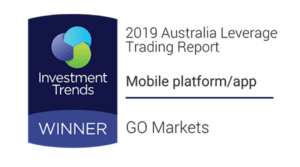
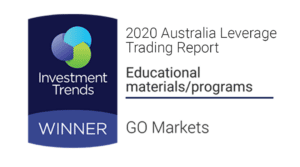






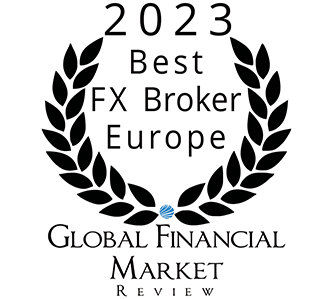














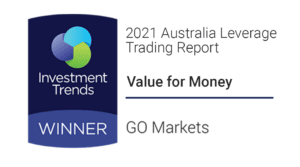












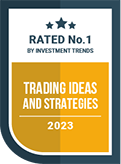



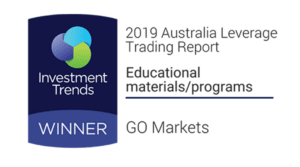
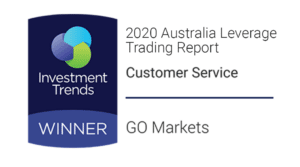
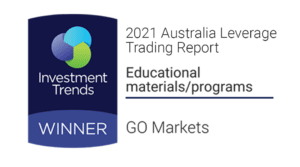

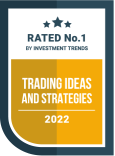





GO Markets
让交易更进一步
探索上千种交易机会,享受专业机构水准的交易工具、流畅稳定的交易体验,以及屡获殊荣的客户支持。开户流程简单快捷,让您轻松开启交易之旅。
.jpg)
US indices pulled back from record highs after the Fed signalled no rate cut in January. The Nasdaq was hit hardest with AI sector anxiety resurfacing.
Combine that with this week's shutdown-delayed jobs data release, and questions are mounting on whether markets can muster a Santa Claus rally this year.
Delayed Jobs Data Could Define Santa Rally
- This week delivers critical economic data that was postponed during the government shutdown:
- Tuesday: Non Farm Payrolls
- Thursday: Consumer Price Index (CPI)
- These two releases could determine whether markets can rally or face further pressure into Christmas.
- Volatility is expected around both announcements as traders position for potential surprises.
ECB and Bank of England Enter Rate Decision Spotlight
- The European Central Bank and Bank of England both announce rate decisions this week.
- EUR and GBP traders should watch closely for any policy divergence that could create currency volatility.
- Cross-border flows may shift as investors weigh different central bank trajectories.
Flash PMI Data Offers Real-Time Economic Pulse Tomorrow
- Tomorrow delivers a global economic snapshot through flash PMI releases from Japan, Australia, Europe, the UK, and the US.
- Markets could react fast to these forward-looking indicators.
- Any regional divergence could signal shifting economic momentum across major markets.
Market Insights
Watch Mike Smith's analysis of the week ahead in markets.
Key Economic Events
Stay up to date with the key economic events for the week.
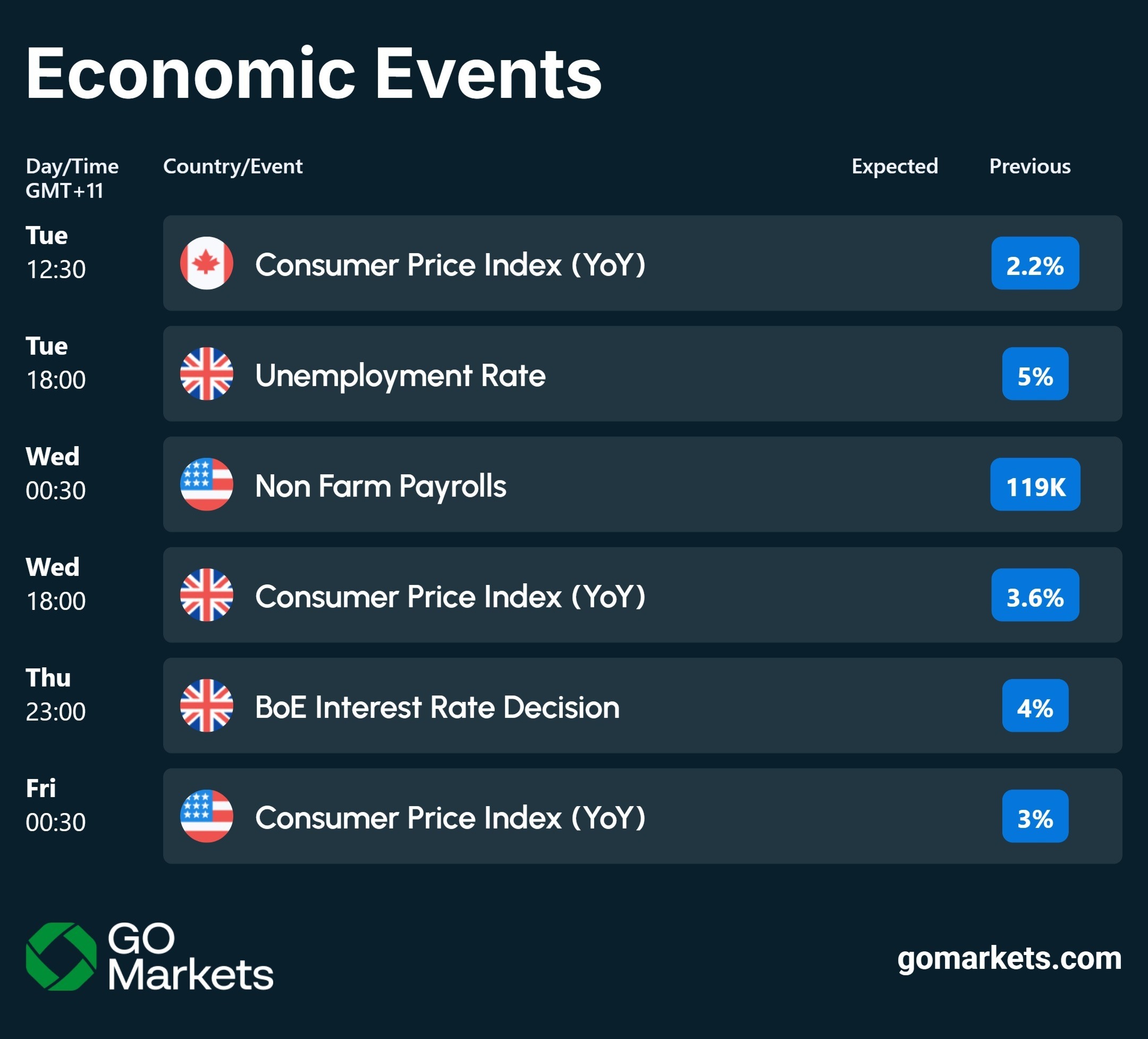
.jpg)
在过去的一到两周时间里,全球的数字巨头齐聚阿联酋首都阿布扎比,因为伴随着阿布扎比的年度金融周,同时进行了多场数字货币相关的会议与峰会,这场数字行业的“武林大会”其本质目的是为整个数字产业带来更多新的机遇和主权基金的关注,以及更多政策方面最前沿的监管战略方向等。
主要的会议和峰会:

从时间表不难看出这次峰会绝非单一峰会,而是国家级的金融周,无论是规模以及参与的人群和带动的资金导向来看,整个阿联酋世界都将在未来很长一段时间的发展里全力投入于国家新一轮的电子信息化发展,而这中间很重要的一个发展策略便是将整个阿布扎比塑造为新的数字之都,为数字货币的繁荣和发展提供更大的场景和真实的资本支援。
本次大会重要成果
1. Binance在ADGM的完全合规落地本次会议之后Binance将在Abu Dhabi Global Market(ADGM)以及Financial Services Regulatory Authority (FSRA)的监管下拥有三重许可,分别涵盖了,交易所,清算机构,以及经纪/托管业务执照从1月5号开始Binance将可以进行现货衍生品的交易,进行清算托管结算和做市交易等,合规落地算是为整个数字货币交易所开设了先河,之后将会有更多数字货币交易所追随进行牌照注册,同时完善监管体系,吸引更多数字市场的交易人员及投资者,振兴数字市场。具体监管的内容包括:

2. 主权基金和巨头家办与头部数字机构建立资本关系阿布扎比投资机构 MGX 向 Binance 投入稳定币资金 20亿美元, 这笔注资是 历史上最大的一笔针对数字交易所的机构投资,也是 Binance 首次获得机构级投资,并以稳定币支付MGX 背后实力:
- 由 Mubadala (主权财富基金) 与 G42 (AI/科技投资巨头) 联合成立
- 目标管理规模 超过 $1000亿美元资产组合
- 战略聚焦 AI + 区块链 + 高科技领域
巨额机构资本流入对市场的影响包括但不限于增强市场流动性与稳定性,改变市场估值基础,产生巨大的资本协同效应,具体来看将会进一步稳定数字货币市场的价格,同时注入流动性增加市场信心同时引动更多主权基金等大型机构的跟投。3. 阿布扎比将成为全球数字合规中枢阿布扎比本次会议无论是牌照还是注资都将给带来非常重大的影响:
- 让全球的数字监管竞争进入新阶段,成为领先的监管高地,极大的带动人才资本以及规则定权方面的领先优势。
- 大国博弈层面将会在规则和监管强化上拥有更多创新,提升国家在相关领域发展的重要话语权
- 从长期角度进一步重塑经济格局,阿布扎比从上世纪开始便已不断进行产业升级创新,从高科技转型到web3发展,每一步都走在时代的最前沿。
结语:本次数字货币的峰会应该作为数字货币市场的里程碑,因为从监管法制的角度上拉开了新篇章的同时从国家层面和资本层面又给予了极大的支持,这种发展策略或将对阿联酋新时代发展带来更多动力也会给整个数字市场在如今非常大的逆风环境下带来极大的支持和支撑。
%20(1).jpg)
最近一段时间,黄金价格的表现格外引人注目。国际金价在高位运行的同时,不断刷新历史纪录,成为全球市场中少数保持强势的资产之一。与以往不同的是,这一轮黄金上涨并未在短期回调后迅速回落,而是呈现出价格中枢逐步抬升的特征。这也意味着,当前的黄金行情背后,可能并不只是情绪推动。本文将结合近期市场环境,梳理推动黄金走强的几条关键因素。
一、黄金近期的价格表现:持续走高且回撤有限
今年以来,黄金价格一路攀升,整体涨幅非常亮眼。根据公开市场数据,截至2025年10月中旬,国际金价年内累计涨幅约为56%。10月上旬,金价历史上首次突破每盎司4000美元的重要关口,此后多数时间在4000美元附近及上方高位震荡,整体走势依然强劲。这意味着,短短一年内,黄金价格涨幅超过一半,创下数十年来最显著的年度涨势之一。这轮上涨不仅刷新了历史纪录,也明显跑赢了同期多数股票及传统风险资产。从更长周期看,黄金价格早已走出此前的低迷区间。2020年8月,国际金价首次突破2000美元;2025年3月,又首次站上3000美元关口。如今触及4000美元水平,意味着黄金在过去五年间价格接近翻倍。可以说,这是继20世纪70年代末以来,最引人注目的黄金上涨阶段之一,其背后反映的是多重宏观因素的叠加与共振。
二、是什么力量在推动这一轮黄金行情?
黄金价格受多种宏观经济与市场因素共同影响。近期支撑金价走强的核心因素,主要集中在以下几个方面:
• 利率环境变化
黄金本身不产生利息,因此与实际利率水平高度相关。在全球主要央行经历快速加息周期后,市场对货币政策方向的预期逐步发生变化。随着利率上行空间收窄,黄金在资产体系中的相对位置随之调整。2025年9月,美联储开启本轮首次降息,市场对宽松周期的预期也在此前阶段逐步反映至金价之中。
• 美元走势影响
黄金以美元计价,美元指数的变化对金价具有直接影响。当美元走弱时,黄金在非美元体系中的价格相对降低,有助于支撑全球需求。近期美元指数整体波动加大,并在部分阶段走弱,这一背景也为黄金价格提供了外部支撑。
• 通胀与实际利率预期
尽管部分经济体通胀水平已有所回落,但从长期视角看,能源转型、供应链重构及地缘摩擦等因素,使市场对货币购买力依然保持敏感。在实际利率偏低或预期回落的环境下,黄金价格往往被用来反映对长期通胀与货币价值的预期变化。
• 地缘政治不确定性
全球地缘政治局势依然复杂,多地区冲突与政策不确定性持续存在。在不确定性上升阶段,市场风险偏好往往下降,黄金的关注度随之提升。值得注意的是,近期黄金并非只在突发事件中短期走强,而是在多重不确定因素叠加下,维持了相对稳定的高位运行状态。
• 央行购金行为与需求结构变化
从市场结构角度看,央行层面的黄金需求对金价形成了重要支撑。世界黄金协会数据显示,2025年前三季度,全球央行年内购金约634吨,延续了自2022年以来的较高购金水平。其中,中国央行已连续13个月增持黄金储备。央行购金通常具有周期长、节奏稳定的特征,这类需求为黄金市场提供了更坚实的底层支撑。
综合来看,利率环境、美元走势、通胀预期、地缘局势与央行需求等多重因素共同作用,塑造了当前黄金市场的强势格局。金价也会随着这些变量的变化而波动,其走势本身反映的是多重宏观力量的动态平衡。
三、在当前宏观环境下,市场如何看待黄金?
在复杂多变的全球环境中,黄金因其独特属性,依然承担着多重角色:
• 避险属性
在经济或金融不稳定时期,黄金常被视为相对独立于单一国家信用体系的资产。历史经验显示,在多次重大危机阶段,黄金价格往往表现出较强的稳定性。
• 长期价值储存功能
从长期角度看,黄金常被用来对冲货币购买力变化。在高通胀或实际利率偏低的阶段,其价格往往被赋予更多宏观意义。
• 市场结构中的稳定因素
由于与股票、债券等资产相关性相对较低,黄金在市场结构中常被视为具有分散作用的一类资产,其价格变化也常被用作观察整体风险情绪的重要参考。
四、总结:黄金价格变化反映了什么?
总体来看,当前黄金价格的表现,并非由单一因素推动,而是全球利率环境、货币体系变化、地缘政治格局以及央行行为等多重因素共同作用的结果。黄金价格在一定程度上,正成为市场观察宏观不确定性和长期价值预期的一面镜子。理解这些背景,有助于更理性地看待黄金走势本身,而不仅仅停留在价格涨跌的表象之上。
References
[1] World Gold Council. Gold hits US$4,000/oz – trend or turning point? 2025-10.
https://www.gold.org/goldhub/gold-focus/2025/10/gold-hits-us4000oz-trend-or-turning-point
[2] Reuters. Gold hits record high as U.S.-China trade woes escalate; silver scales all-time peak. 2025-10-13.
https://www.reuters.com/world/china/gold-hits-record-high-us-china-trade-woes-escalate-silver-scales-all-time-peak-2025-10-13/
[3] Reuters. Global gold demand climbs 3% to quarterly record as investment soars, WGC says. 2025-10-30.
https://www.reuters.com/world/china/global-gold-demand-climbs-3-quarterly-record-investment-soars-wgc-says-2025-10-30/
[4] World Gold Council. Gold Demand Trends: Q3 2025. 2025-10 (report page).
https://www.gold.org/goldhub/research/gold-demand-trends/gold-demand-trends-q3-2025
[5] Reuters. Gold sails past $3,900/oz for first time as safe-haven bids… 2025-10-06.
https://www.reuters.com/world/india/gold-sails-past-3900oz-first-time-safe-haven-bids-2025-10-06/
[6] Reuters. Gold edges lower after a divided Fed cuts rates; silver hits record high. 2025-12-11.
https://www.reuters.com/world/india/gold-edges-lower-after-divided-fed-cuts-rates-silver-hits-record-high-2025-12-11/
[7] Reuters. Fed cuts interest rates for first time since 2020. 2025-09-18.
https://www.reuters.com/world/us/fed-cuts-interest-rates-first-time-since-2020-2025-09-18/
[8] Reuters. Gold breaks $3,000 milestone. 2025-03-14.
https://www.reuters.com/markets/commodities/gold-breaks-3000-dollar-milestone-2025-03-14/
[9] Reuters. Gold breaks $2,000 for first time. 2020-08 (Reuters report; URL may vary by region/mirror).
https://www.reuters.com/article/us-gold-record-idUSKBN25L0EV
[10] World Bank Blogs (Open Data). When Uncertainty Rises, Gold Rallies. (accessed 2025-12-12).
https://blogs.worldbank.org/en/opendata/when-uncertainty-rises–gold-rallies

